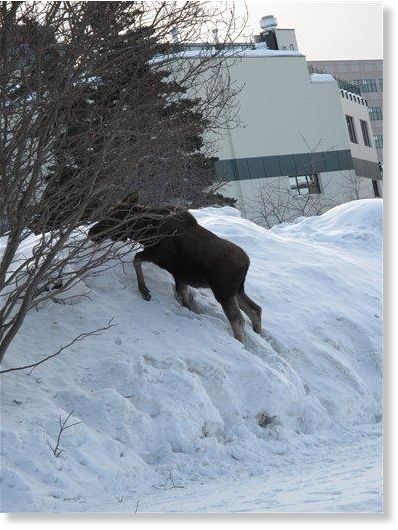
But some residents are hoping for more, at least another 3.3 inches. Then they could say they made it through the winter when the nearly 60-year record of 132.6 inches was broken.
"I want it destroyed," resident Melissa Blair said. "I want to see another foot and knock that record out of the park."
Even by Alaska standards, this winter is unusual for the hardy residents of the state's largest city. But extreme weather isn't just affecting Alaska, it has also hit the Lower 48.
The first three months of 2012 have seen twice the normal number of tornadoes. And 36 states set daily high temperature records Thursday. The Lower 48 had its fourth warmest winter on record, while Alaska had its coldest January on record.
Two different weather phenomenon - La Nina and its northern cousin the Arctic Oscillation - are mostly to blame, meteorologists say. Global warming could also be a factor because it is supposed to increase weather extremes, climate scientists say.
"When you start to see the extreme events become more common, that's when you can say that it is a consequence of global warming," University of Victoria climate scientist Andrew Weaver said.
Nearly 11 feet of snow has fallen on Anchorage this winter, forcing the city to haul away at least 250,000 tons of snow - or around 500 million pounds - to its six snow disposal sites.
The sites are close to overflowing. State and city crews are working around the clock to clear almost 2,500 miles of roads.
City street maintenance superintendent Dan Southard said the 125,000 truckloads of snow hauled by city crews would stack up to almost 1,200 feet if they were dumped onto a football field surrounded by walls.
That's not even counting the loads disposed of by state crews.
"It's an enormous task," Southard said of this winter's challenges.
This winter is just fine with Kenny Withrow, owner of Popeye's Services, a snow-clearing outfit. He has been working well into the night, clearing driveways and parking lots and charging $350 to $1,200 for each roof clearing job.
Last year, he cleared maybe five roofs. This year, he's done as many as 50, and the phone calls from worried residents keep coming. Withrow enjoys the snow because of its beauty and the snowmobiling adventures it makes possible.
He does wonder if it's ever going to end, though. Still, he's rooting for more of the white stuff. There's that record to break.
"We're so close," he said. "We might as well just get it done."
To date, the city has received 129.4 inches of snow this winter, compared with the historical average of 69.5 inches. No more is expected in the coming days, but snow can typically fall well into April, which averages four inches.
National Weather Service meteorologist Dave Strickland said it's hard to predict whether the city will win the big-snow crown.
"Bring it on," said Strickland, an enthusiastic outdoorsman. "We could break the record every year and I'd be happy. But there probably would be a lot of unhappy people."
Count Nick Wiederholt among them. He's sick of snow and cold and can't wait for the long, warm days of summer. But first, he's bracing for the mess ahead when the snow melts.
"I always say I'll survive winter if I can get a good summer," he said.



What about the rest of the Solar System?
The Sun is cooling off while the Planets possessing atmospheres are having very large storms.
Check the NASA headlines.
Ah, but you can't fight climate change on Saturn, now can you? At least not in a physical or monetary sense.